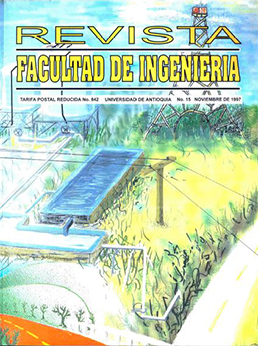Diseño mediante satisfacción de restricciones
DOI:
https://doi.org/10.17533/udea.redin.325744Resumen
En este artículo se analiza el método de solución de problemas de la Inteligencia Artificial conocido por satisfacción de restricciones, su empleo en el diseño y cómo éste fue realizado en el Sistema Inteligente de Ayuda al Diseño (SIAD).Descargas
Citas
BELLO P., Rafael et al. An lnfelligenf Sysfem fo Help Designer Applications of Computer to Engineering design, manufacturing and management, editado por G.L. Lastra, J.L. El")(:arnasao y A.A.G. Requich, Elsevier Science Publishers, B. V. (North Holland), 1989.
BELLO P., Rafael, D. GÁLVEZ L., M.M. GARCÍA, G. SÁNCHEZ. Integrated package oriented to intelligent CAD system implementation. Proceeding of Conference on CAD/CAM Technology Transfer tp Latin America, IFIP, 1990.
BELLO P., Rafael, D. GÁLVEZ L., M.M. GARCÍA, G. SÁNCHEZ. A knowledge representation form for mechanical engíneering. Knowledge-based system, Vol 7, No 3, sept 1994. DOI: https://doi.org/10.1016/0950-7051(94)90001-9
DYM C., L. y E. LEVITT . Knowledge-Based System in Engineering. McGraw Hill, 1991.
D'AMBROSIO, J.G. y W.P. BIRMINGHAN. Preference-directed design. Artificial Intelligence for engineering design, analysis and manufacturing, 1995, No 9, pp. 219-230. DOI: https://doi.org/10.1017/S0890060400002456
KIMUR A, F. y H. SUZUKI. Varational product design by constraint propagation and satisfaction in product modelling. Annals of de CIRP, Vol 35, No 1, 1986. DOI: https://doi.org/10.1016/S0007-8506(07)61842-3
RUSSELL, S. y P. NORRIG. Artificial Intelligent a modern approach. Prentice Hall, 1995.
SHAPIRO, S. C. Encyclopedia of Artificial Intelligence. A Wiley-Interscience Publications, John Wiley & Sons, 1990.
Descargas
Publicado
Cómo citar
Número
Sección
Licencia
Los artículos disponibles en la Revista Facultad de Ingeniería, Universidad de Antioquia están bajo la licencia Creative Commons Attribution BY-NC-SA 4.0.
Eres libre de:
Compartir — copiar y redistribuir el material en cualquier medio o formato
Adaptar : remezclar, transformar y construir sobre el material.
Bajo los siguientes términos:
Reconocimiento : debe otorgar el crédito correspondiente , proporcionar un enlace a la licencia e indicar si se realizaron cambios . Puede hacerlo de cualquier manera razonable, pero no de ninguna manera que sugiera que el licenciante lo respalda a usted o su uso.
No comercial : no puede utilizar el material con fines comerciales .
Compartir igual : si remezcla, transforma o construye a partir del material, debe distribuir sus contribuciones bajo la misma licencia que el original.
El material publicado por la revista puede ser distribuido, copiado y exhibido por terceros si se dan los respectivos créditos a la revista, sin ningún costo. No se puede obtener ningún beneficio comercial y las obras derivadas tienen que estar bajo los mismos términos de licencia que el trabajo original.










 Twitter
Twitter